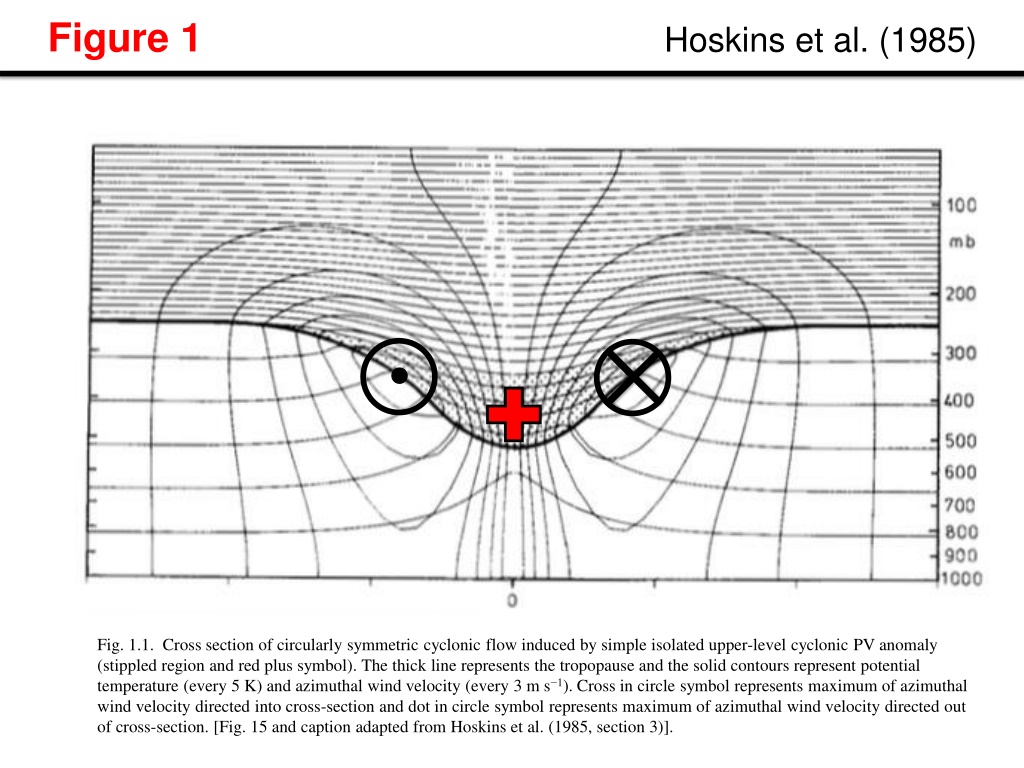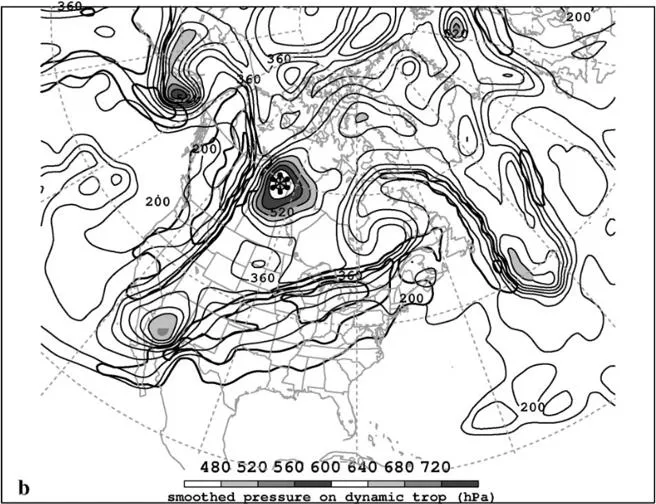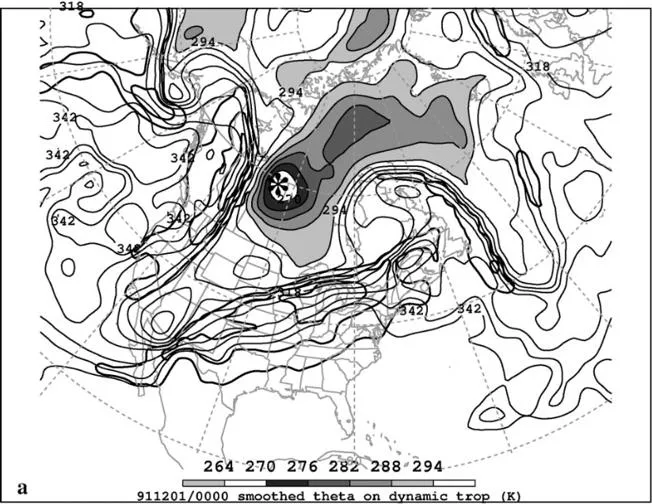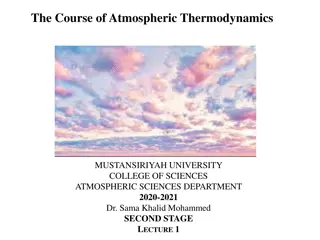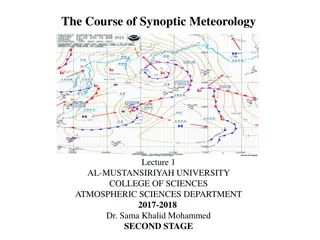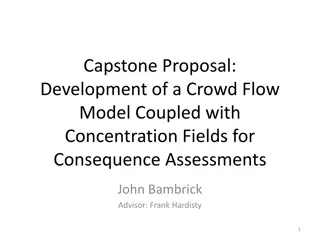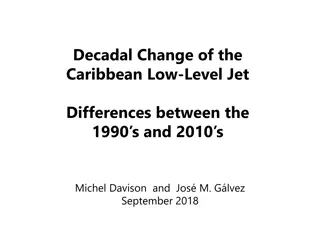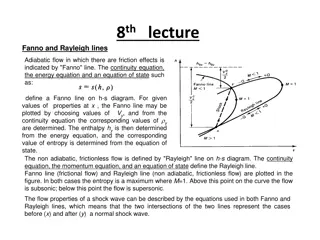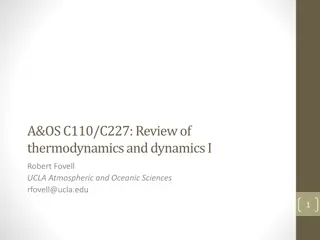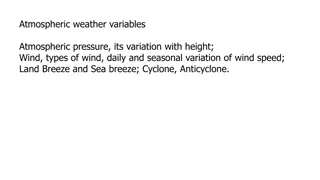Cyclonic Flow Analysis in Atmospheric Dynamics Study
The figures presented in this study showcase cross-sections and composite sections of cyclonic flow induced by upper-level potential vorticity (PV) anomalies. Various parameters such as potential temperature, wind velocity, geopotential height, and relative humidity are analyzed to understand the structure and evolution of cyclonic systems. Detailed illustrations and annotations aid in highlighting the key features associated with cyclonic processes in the atmosphere.
Download Presentation

Please find below an Image/Link to download the presentation.
The content on the website is provided AS IS for your information and personal use only. It may not be sold, licensed, or shared on other websites without obtaining consent from the author.If you encounter any issues during the download, it is possible that the publisher has removed the file from their server.
You are allowed to download the files provided on this website for personal or commercial use, subject to the condition that they are used lawfully. All files are the property of their respective owners.
The content on the website is provided AS IS for your information and personal use only. It may not be sold, licensed, or shared on other websites without obtaining consent from the author.
E N D
Presentation Transcript
Figure 1 Hoskins et al. (1985) Fig. 1.1. Cross section of circularly symmetric cyclonic flow induced by simple isolated upper-level cyclonic PV anomaly (stippled region and red plus symbol). The thick line represents the tropopause and the solid contours represent potential temperature (every 5 K) and azimuthal wind velocity (every 3 m s 1). Cross in circle symbol represents maximum of azimuthal wind velocity directed into cross-section and dot in circle symbol represents maximum of azimuthal wind velocity directed out of cross-section. [Fig. 15 and caption adapted from Hoskins et al. (1985, section 3)].
Figure 2 Pyle et al. (2004) TPV TPV TPV TPV Fig. 2. Analyses for 0000 UTC 30 Nov 1991: (a) DT (1.5-PVU) potential temperature (thin solid, values at and below 342 K contoured at a 6-K interval, shaded as indicated for values below 294 K) and DT wind speed (thick solid; contour interval, 15 m s 1; starting at 50 m s 1); (b) DT pressure (thin solid; contour interval, 40 hPa; shaded as indicated for values greater than 480 hPa) and DT wind speed [contoured as in (a)]; (c) 300-hPa geopotential height (thin solid; contour at a 12-dam interval), 300-hPa wind speed [contoured as in (a)], and wind (plotted using standard convention: pennant, full barb, and half barb denote 25, 5, and 2.5 m s 1, respectively); and (d) PV calculated over the 316 324-K layer (thin solid; contour at a 0.8-PVU interval for values greater than 1.6 PVU, shaded as indicated for values greater than 5.6 PVU) and wind speed at 320 K [contoured as in (a)]. The position of the DT pressure maximum associated with the TPV of interest is marked with an asterisk in each panel. Label TPV and arrow point to position of TPV. [Fig. 11 and caption adapted from Pyle et al. (2004)].
Figure 3 Cavallo and Hakim (2010) Fig. 1.3. Composite west east cross-TPV section of anomalous (a) temperature (K), (b) v-wind component (m s 1), (c) Ertel PV (PVU), and (d) relative humidity (%). Thick solid black contour is the composite tropopause and thick dashed black contour is the background tropopause. The 0 contour is denoted by the thin, solid contour. [Fig. 9 and adapted caption from Cavallo and Hakim (2010)].
Figure 4 Hakim and Canavan (2005) Fig. 1.5. Total number of tropopause cyclonic vortex events occurring in a 2.5 10 lat lon box centered at a point, with a cosine-latitude normalization applied for equal-area weighting [Fig. 2 and adapted caption from Hakim and Canavan (2005)].
Figure 5 Hoskins et al. (1985) Fig. 1.7. A schematic picture of cyclogenesis associated with the arrival of an upper-level cyclonic PV anomaly over a low-level baroclinic region. In both (a) and (b) solid plus sign indicates location of upper-level cyclonic PV anomaly, solid black contour at the top represents the tropopause, black contours at bottom represent isentropes at the ground, thick solid arrow represents the cyclonic circulation induced by upper-level cyclonic PV anomaly at upper-levels, and thin solid arrow represents the cyclonic circulation induced by upper-level cyclonic PV anomaly at low-levels. In (b) only, open plus sign represents low-level warm temperature anomaly, thick open arrow represents cyclonic circulation induced by the low-level warm temperature anomaly at low-levels, and the thin open arrow represents the cyclonic circulation induced by the low-level warm temperature anomaly at upper-levels. [Fig. 21 and caption adapted from Hoskins et al. (1985, section 6e)].
Figure 6 Pyle et al. (2004) TPV TPV a b TPV TPV d c Fig. 1.9. DT (1.5-PVU) potential temperature (thin solid, values at and below 342 K contoured at a 6-K interval, shaded as indicated for values below 294 K) and DT wind speed (thick solid; contour interval, 15 m s 1; starting at 50 m s 1) valid (a) 0000 UTC 30 November, (b) 0000 UTC 1 December, (c) 1200 UTC 2 December, and (d) 0000 UTC 4 December 1991. The position of the DT pressure maximum associated with the TPV of interest is marked with an asterisk in each panel. Label TPV and arrow point to position of TPV. [Figs. 10 13 and captions adapted from Pyle et al. (2004)].
Figure 7 Shapiro et al. (1987) a b A A A A Fig. 1.11. (a) Isopleths showing 500-hPa height (dam; solid black contours) and temperature ( C, dashed contours) and stations showing 500-hPa temperature ( C) and wind (flags and barbs, where flag = 25 m s 1, full barb = 10 m s 1, and half barb = 2.5 m s 1) at 0000 UTC 20 January 1985. Projection line for cross section AA is shown by bold red line. (b) Cross section of potential temperature (K, thin solid lines) and wind speed (m s 1, heavy dashed lines) between Sault Sainte Marie, Michigan and Longview, Texas, along the projection line AA shown on the left panel. Heavy solid line is tropopause (10 7 K s 1 hPa 1 isopleth of PV) and light dashed lines indicate tropospheric frontal and stable layer boundaries. Soundings for stations (labeled at bottom) show wind (units and symbols same as for winds shown on left). Jet cores are marked by J . [Figs. 8 9 and captions adapted from Shapiro et al. (1987)].
a A A b A A
